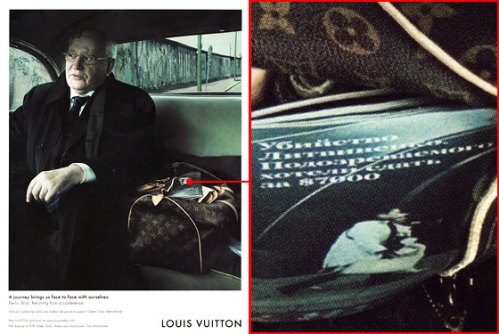By Alexandra Orloff
Heritage brands such as Hermès and Dior have had their share of success in the tale of luxury. From Princess Grace de Monaco, to Princess Diana, better known as Lady Di, some of the most prestigious luxury brands have popularised their goods through high-profile clientele and named their products after princesses and first Ladies. Some famous examples include the Kelly Bag, introduced in the 1930s and made popular by Grace Kelly; the Constance shoulder bag with a double strap and large H clasp; and the Trim shoulder bag preferred by Jacqueline Bouvier Kennedy Onassis, the American first Lady.
In the 80s, another bag was named after actress Jane Birkin, who co-designed the bag with company president Jean-Louis Dumas after complaining that her Kelly bag was not practical for everyday use. The Birkin bag has been featured in television shows such as Gilmore Girls, Sex and the City, Will & Grace and Girlfriends. It also has been the subject of tell-all memoir book by Michael Tonello ‘Bringing Home the Birkin’.
These items are not only timeless classic symbols of luxury brands, but also a dream for all of use who dream of a regal and VIP lifestyle.
The ‘Lady Dior’, named after Princess Diana, was released in the mid 1990s when the creative manager of Dior was Gianfranco Ferre. The bag became a bestseller when the First Lady of France, Madam Chirac, began to flaunt this exclusive Dior. As for the wife of the Emir of Qatar, Sheikha Mozah bint Nasser Al Missa, is a fashion icon all over the world. Even the British designer Julien Macdonald praised her by declaring “that not since Jackie O, has there been any first lady with such global resonance in terms of fashion”. Humbly, Sheikha Mozah says she does not even employ a stylist, quite something for one of the world’s richest women.
Should you want to predict stock markets, follow what Michelle Obama wears and her Twitter trends. A study published by The Harvard Business Review claims that Michelle Obama’s wardrobe choices have boosted the retail world by £1.7bn. The conclusion of this analysis confirms that when Mrs. Obama wears an outfit, the brands anticipate their products to become the latest New Thing. These companies are boosted in their stock price and experience abnormally high returns. Now we all understand why Mrs. Obama never wears any European Brands – it is not good for the GDP of United States!
For Sarah Palin, The Republican National Committee has spent more than $150,000 on clothes and accessories to dress her. It is also rumoured that her social media spending costs around $200,000 annually. This is the ultimate political guide for looking good on Twitter and Facebook.
In Europe it is the opposite. The battle for women in the Groupe Pinault-Printemps-Redoute (PPR) and Louis Vuitton Moet Hennessy (LVMH) is different as these groups have elected key women in their board for politico-economic purpose. At PPR, the new proposed female directors include Laurence Boone, a chief economist at Barclays Capital; Yseulys Costes, chairman and chief executive officer of advertising, marketing and research company 1000mercis.com; and Caroline Puel, chief journalist for Le Point in Northeast Asia. François-Henri Pinault, PPR chairman and CEO, declared that these three women brought with them expertise in areas which are ‘key drivers’ for the global economy, e-commerce and the all important Asian factor.
In April 2010, luxury conglomerate LVMH enlisted the ex-First Lady Bernadette Chirac, wife of former French president Jacques Chirac, to its board of directors. Bernard Arnault, chairman and CEO of the French luxury group, has brought politics into its door. Bernard Arnaud stated that “the criteria for the choice of a woman to a board like LVMH, are those of a personality that can bring to the council, by her experience, her knowledge of the world and countries in which the LVMH group acts, a feminine eye. We need people who enrich the work of the board,” he said. “Three reasons have led to this choice,” added a spokesman for LVMH. “Mrs Chirac has been the first lady of France for 12 years; she has always defended fashion and artisans by regularly attending parades; finally, the group wanted a feminine figure on its board of directors”.
Perhaps you may remember the memorable Louis Vuitton ad in glossy magazines. The character is a famous politician – the last leader of the old Soviet Union. Mikhail S. Gorbachev is being driven in a limo passing the remains of the Berlin Wall. Next to him, a reliable LV monogrammed luggage-set, with a message written in Russian sticking out of the bag: “The Murder of Litvinenko: They Wanted to Give Up the Suspect for $7,000.” The reference is to Alexander V. Litvinenko, the former K.G.B. spy who died after being poisoned with a radioactive isotope, on Piccadilly Street. On his deathbed, Mr. Litvinenko accused the ex-President Vladimir V. Putin of orchestrating his murder. Was it a faux pas or was it a coincidence? To what extent do heritage brands play politics instead of economics, and how far are they willing to support key political figures to sell?
© Alexandra Orloff
More on: www.luxuryfacts.com – http://www.luxuryfacts.com/index.php/pages/1229/1203


WOW. I salute you for this article. It made me see things from a different perspective. Thank you
Thank you for your kind words, it is very much appreciated. Sacha Orloff is always tackling the latest trends on Luxury, moreover in emerging and strong economies.
How true!
Dear Karina,
Thank you for your comment. Indeed it is interesting to monitor to what extend retail plays a part in politics through its economy.
Alexandra
Pingback: Luxury God » Blog Archive » The politics of Luxury – Brands, Politicians and Princesses …